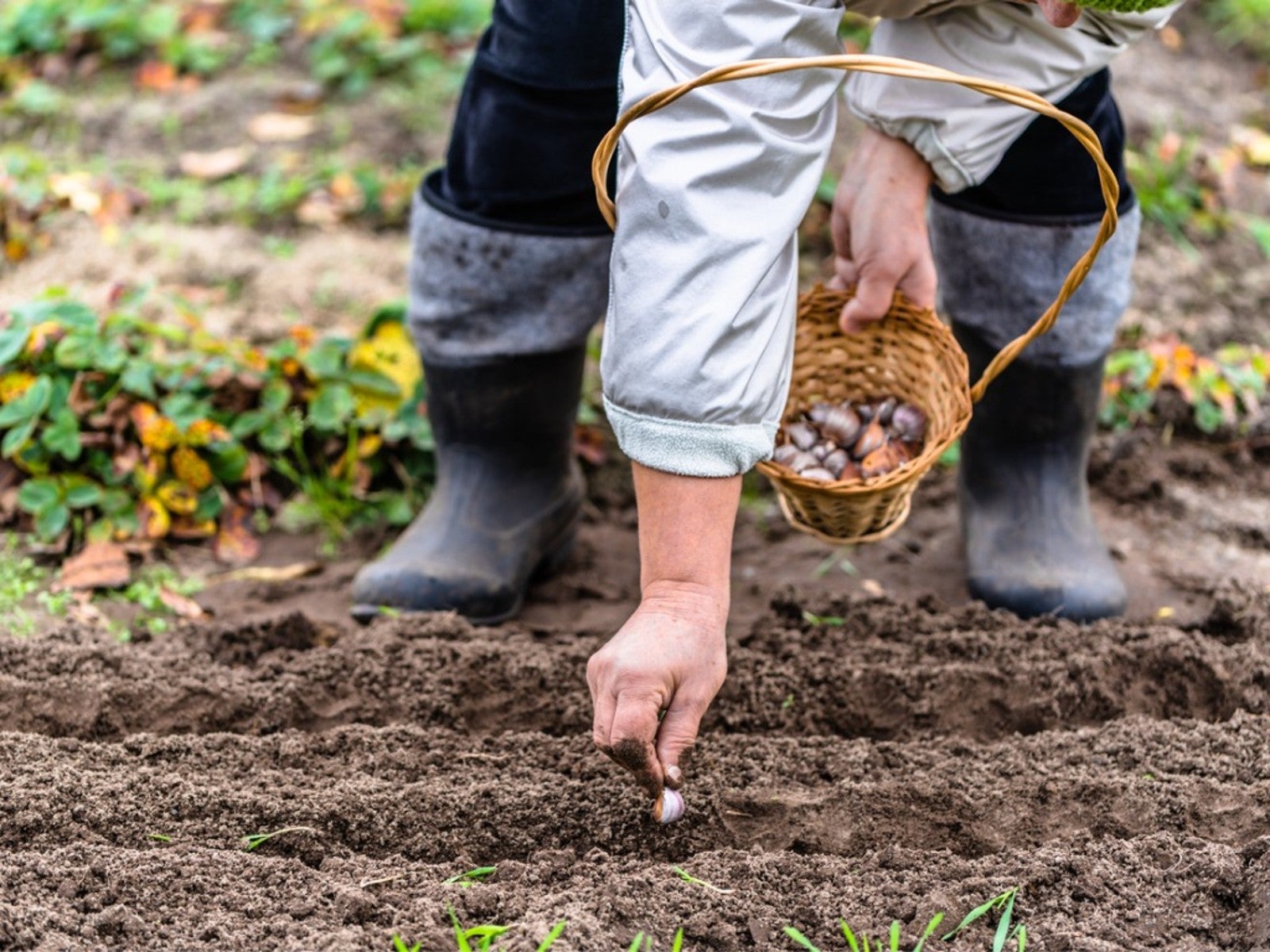Why Fall Garlic Planting Is The Best Method

Garlic is used in almost every cuisine on the planet, and with good reason. It is incredibly versatile but also a hardy and easy crop to grow. While there are many tips for growing garlic, each one different from the last, one thing everyone seems to agree on is planting garlic in the fall.
Planting garlic bulbs in the fall gives it a head start to produce a larger bulb. Timing for fall garlic planting is another area where gardeners differ. Some say planting all garlic should occur before and some say after the first frost. Confused? Don’t worry - we’ve got you covered. Keep reading to learn when and how to plant fall garlic.
Benefits of Planting Garlic in the Fall
As already mentioned, planting garlic in the fall gives the bulbs time to mature. The timing allows the plant to produce a robust root system prior to sprouting leaves. This means that garlic will be one of the first things to pop up in the spring, and when harvest time rolls around the bulbs will be large and full.
Best Garlic Bulbs for Fall Planting
There are two types of garlic: softneck and hardneck. Supermarket garlic is almost certainly softneck garlic. Softneck garlic is best grown in areas with mild winters, while hard neck varieties are more winter hardy. Softneck stores better than hardneck, but hardneck peels easier.
Hardneck garlic also produces a “scape,” which is a long flowering stem. The garlic scape needs to be cut and removed from hardneck garlic in the early summer to direct the plant’s energy toward production of the bulb. Some say hardneck has a better flavor than softneck garlic, and softneck produces more cloves than hardneck.
At the end of the day, with the exception of hardiness, it is a matter of taste as to which variety you choose.
When to Plant Fall Garlic
The timing for planting garlic is debatable. Some say to plant prior to the first frost, while others say garlic can be planted even when the ground has frozen. It seems a general consensus is to plant garlic between September and November -- around Halloween is commonly known as a good time.
Gardening tips, videos, info and more delivered right to your inbox!
Sign up for the Gardening Know How newsletter today and receive a free copy of our e-book "How to Grow Delicious Tomatoes".
Of course, timing relates to the area you live in. In the North it is said that garlic should be planted in late September or October, at least two weeks prior to the first frost of the season. In the South the ideal planting time is said to be October, although it may be planted in November, December or even January in some areas.
How to Plant Garlic in the Fall
Garlic thrives in well-draining, moist soil with a pH of 6.0-7.0. Once the cloves have been broken up, the bed needs to be prepared and potentially amended, and then it’s time to plant.
1. Choose a Planting Site
Choose a site that is in full sun. Test your soil to determine the pH. If the pH level is below 5.8, amend the soil with lime. Amend the soil further as the test determines. Garlic requires a moderate amount of nitrogen so fertilizer can be incorporated before planting. The amount of phosphorus or potassium needed will be determined by the soil test.
2. Prepare your Bulbs
Before planting garlic, the bulbs need to be broken down. Do this no more than a day prior to planting or the roots will dry out. Sort the cloves and select the largest for planting. The smaller cloves can be used in cooking.
3. Add Mulch
Once the soil has been amended, plant the cloves pointed side up two inches deep (5 cm) in single or several rows, spaced 4-8 inches (10-20 cm) apart.
Lay a good four inches (10 cm) of straw or shredded leaves over the planting site to protect the roots, conserve moisture and retard weeds. If the planting is in a windy area, cover the site with branches as well to keep the straw in place.
4. Water
Keep the cloves consistently moist throughout the growing season.
When to Harvest Garlic Planted in Fall
When the leaves begin to die back, reduce the amount of water. When the leaves are dry, harvest the garlic using a flat shovel or garden fork to loosen the soil and then gently lift the plants and cloves from the soil. Allow the plants to dry in an airy, shaded spot for a couple of weeks.
Once the bulbs have cured, the wrapper and roots will be dry and papery. Store the cured bulbs in a cool, dark and dry area. They should keep in this manner for several months.

Amy Grant has been gardening for 30 years and writing for 15. A professional chef and caterer, Amy's area of expertise is culinary gardening.
-
 Never Plant Seedlings Until They Pass These 3 Simple Tests
Never Plant Seedlings Until They Pass These 3 Simple TestsDon't be over-eager to transplant seedlings into the garden before they are ready. These quick and easy checks will help ensure flourishing plants.
By Mary Ellen Ellis
-
 Grow ‘Karl Rosenfield’ Peony Plants For The Ultimate Frilly Border Beauties And Cut Flowers
Grow ‘Karl Rosenfield’ Peony Plants For The Ultimate Frilly Border Beauties And Cut FlowersFor frilly double magenta peony petals infused with a heady fragrance, grow ‘Karl Rosenfield’ peony plants. Here’s how to cultivate the ultimate plushy blooms
By Tonya Barnett